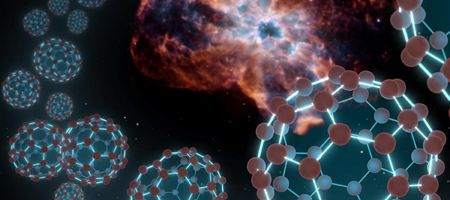Astronomers using NASA’s Spitzer Space Telescope have discovered the spherical carbon molecules known as ‘buckyballs’ in space for the first time.

Buckyballs are made of 60 carbon atoms arranged in three-dimensional, spherical structures. They are named for their resemblance to architect Buckminster Fuller’s geodesic domes, which have interlocking circles on the surface of a partial sphere.
While buckyballs were believed to be floating around in space, this is the first time they’ve been detected.
“We found what are now the largest molecules known to exist in space,” said astronomer Jan Cami of the University of Western Ontario, Canada.
“We are particularly excited because they have unique properties that make them important players for all sorts of physical and chemical processes going on in space.”
The Cami team found the carbon balls in a planetary nebula named Tc1. They may reflect a short stage in the star’s life, when it sloughs off a puff of material rich in carbon.
The research team also found the more elongated relative of buckyballs, known as C70, for the first time in space. These molecules consist of 70 carbon atoms and are shaped more like an oval rugby ball.
The astronomers used Spitzer’s spectroscopy instrument to analyze infrared light from the planetary nebula and see the spectral signatures of the buckyballs.
The data was compared with data from laboratory measurements of the same molecules and showed a perfect match.
“We did not plan for this discovery,” Cami said. “But when we saw these whopping spectral signatures, we knew immediately that we were looking at one of the most sought-after molecules.”
In 1970, Japanese professor Eiji Osawa predicted the existence of buckyballs, but they were not observed until lab experiments in 1985. They have since been found on Earth in candle soot, layers of rock and meteorites.
They have unique strength and exceptional chemical and physical properties, with potential applications including armor, drug delivery and superconducting technologies.
Sir Harry Kroto, who shared the 1996 Nobel Prize in chemistry with Bob Curl and Rick Smalley for the discovery of buckyballs, said, “This most exciting breakthrough provides convincing evidence that the buckyball has, as I long suspected, existed since time immemorial in the dark recesses of our galaxy.”






